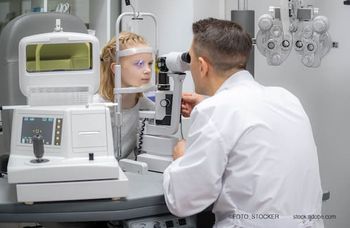
How new methodology improves accuracy for IOL power selection
A new method being developed to improve the accuracy of IOL power calculations for cataract surgery uses pattern recognition as its basis.
Take-Home
A new method being developed to improve the accuracy of IOL power calculations for cataract surgery uses pattern recognition as its basis.
By Lynda Charters; Reviewed by Warren E. Hill, MD
Dr. HillMesa, AZ-Radial basis functions-a method being developed to improve the
This new method draws on technology outside of
“We believe that it is possible to increase patient safety and physician confidence and reduce the costs associated with a refractive surprise after cataract surgery,” Dr. Hill said. “Our research team has developed a self-validating approach for improved refractive accuracy that combines enhanced axial metrics with two aspects of an already established calculation methodology.”
Dr. Hill-along with his algorithm development “dream team” that includes Peter Maloney, SMME, senior principal consulting engineer at MathWorks, Novi, MI; Doug Koch, MD, and Li Wang, MD, PhD, of Baylor College of Medicine, Houston; Sheridan Lam, MD, of DuPage, IL, and Johnny Gayton, MD, of Warner-Robins, GA-adopted an engineering tool to the task IOL power selection that does not use formulas. The goal was to take the accuracy of this process to the next level by adopting a technological base from the world of artificial intelligence.
The need for such an investigation came from insights that came out of optimizing physician cataract surgery outcomes databases for more than 200,000 cases and observing the typical accuracy.
The majority of surgeons are within ±0.50 D only 78% of the time, Dr. Hill noted. Only 6% of databases reviewed were at this level of accuracy 84% of the time, and less than 1% of databases achieved this level of accuracy at a 92% level, he added.
Basis for technology
Much of what is used in ophthalmology actually had its beginning in some other field, with the technological basis for optical biometry and even phacoemulsification being well-known examples, Dr. Hill said.
“Borrowing two aspects of a well-established calculation methodology from our colleagues in engineering holds out the promise of a new level of IOL selection accuracy and enhanced patient safety,” he said.
For this study, all axial measurements were made with a device (Lenstar, Haag-Streit) employing an improved measurement algorithm for the optical path length of each eye individual compartment. This is in contrast to optical biometry using technology (IOLMaster, Carl Zeiss Meditec), which displays a global measurement of axial length from the cornea, to the retina, combined with an algorithm meant to emulate immersion biometry, according to Dr. Hill.
Radial basis functions
This new calculation method uses radial basis functions to replicate the complex nonlinear relationships of the human eye as an alternative to the existing theoretical formulas. Current methods of IOL power calculation that use formulas limit possibilities to situations that are already understood. The strength of radial basis functions lies in the ability to learn how to do tasks based on data, independent of what is already known.
In addition, radial basis functions are completely self-organizing, meaning that this process is capable of creating its own organization, or representation of the data. Such an approach is exceptionally well suited to the task of nonlinear relationships, which remains a shortcoming of most theoretical formulas.
Radial basis functions provides robust outcomes based on data interpolation, and pattern recognition with a validating boundary model based on only three parameters, i.e., the axial length, central corneal power, and anterior chamber depth, Dr. Hill explained.
When using pattern recognition, it is important to develop a method that can do the most with the least amount of information. Using this branch of mathematics, when a large number of variables are used, the final algorithm tends to over-fit the data, meaning that it learns insignificant details. A validating boundary model indicates if the calculation is internally valid.
Examples for the use of radial basis functions are facial recognition software, engine calibration, financial planning and 12-lead electrocardiogram pattern recognition of an increased risk for sudden cardiac death.
For the initial study, our research team was able to predict correctly the refractive outcome for a given IOL within a ±0.50 D accuracy for 96.2% of 681 eyes. Using a second, independent validation set that was not used to originate the RBF algorithm, and with measurements using the IOLMaster, the ±0.50 D accuracy for 755 eyes was 92.3%.
At a minimum, IOL power selection using radial basis functions is on a par with the most advanced theoretical formulas, such as Holladay 2, Barrett and Olsen. Data from this first pass effort is good enough for our team cautiously to predict that it may actually be better, said Dr. Hill.
The only caveat is that for IOL power calculations by this method is that it is still in its infancy and more work needs to be done before it can be routinely used in a clinical setting.
Warren E. Hill, MD
Dr. Hill has no financial interest in the subject matter.
Newsletter
Don’t miss out—get Ophthalmology Times updates on the latest clinical advancements and expert interviews, straight to your inbox.



















































.png)


